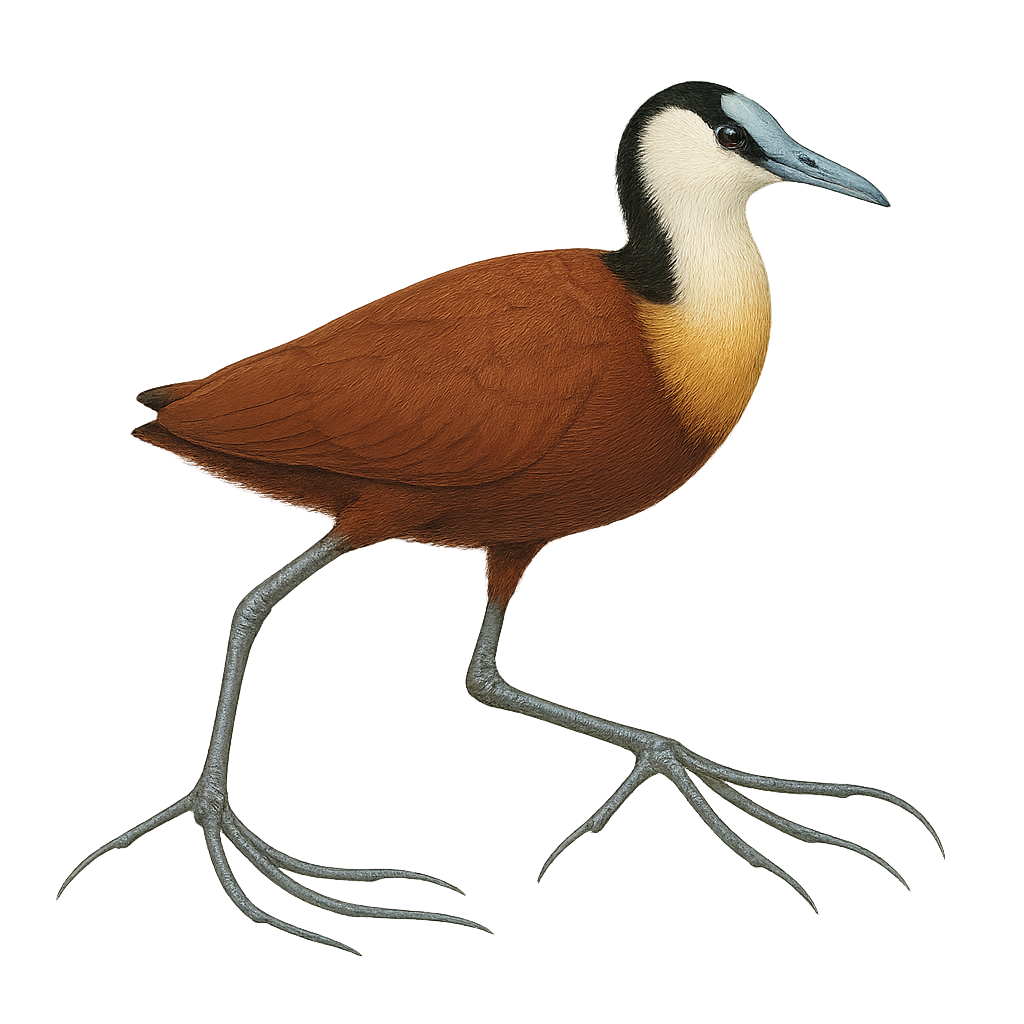Your wildlife photography guide.
Explore the african jacana in detail, study its behavior, prepare your shots.
Where to observe and photograph the african jacana in the wild
Learn where and when to spot the african jacana in the wild, how to identify the species based on distinctive features, and what natural environments it inhabits. The WildlifePhotographer app offers tailored photography tips that reflect the african jacana’s behavior, helping you capture better wildlife images. Explore the full species profile for key information including description, habitat, active periods, and approach techniques.
African Jacana
Scientific name: Actophilornis africanus

IUCN Status: Least Concern
Family: JACANIDAE
Group: Birds
Sensitivity to human approach: Suspicious
Minimum approach distance: 10 m
Courtship display: November to December
Incubation: 22-26 jours
Hatchings: November to January
Habitat:
Wetlands, lakes, marshes
Activity period :
Primarily active during the day, with peak activity in the morning and late afternoon.
Identification and description:
The African Jacana, Actophilornis africanus, is a water bird known for its ability to walk on lily pads due to its long toes and claws. It features a golden-brown chest and neck, contrasting with its dark brown back and black wings. The forehead is adorned with a pale blue frontal shield, and the beak is blue-grey. This bird is mainly found in the wetlands of sub-Saharan Africa, where it feeds on insects, mollusks, and seeds. The African Jacana is polyandrous, meaning the female mates with several males, who then take care of incubating the eggs and caring for the young. This species is an excellent indicator of the health of aquatic ecosystems.
Recommended lens:
400 mm – adjust based on distance, desired framing (portrait or habitat), and approach conditions.
Photography tips:
To photograph the African Jacana, focus on wetlands early in the morning or late afternoon when the light is soft. Use a telephoto lens of 400mm or more to capture details without disturbing the bird. Be patient and wait for it to approach naturally. A tripod can be useful to stabilize your camera, especially when using a long focal length. Observe its behavior closely to anticipate its movements and capture dynamic shots.
The WildlifePhotographer App is coming soon!
Be the first to explore the best nature spots, track rutting seasons, log your observations, and observe more wildlife.
Already 1 439 wildlife lovers subscribed worldwide

